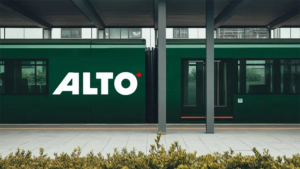Small-town southwestern Ontario stands to lose out as the provincial government pursues its shiny megaprojects, GO Regional Express Rail (RER) and high-speed rail (HSR) from Windsor to Toronto, delegates attending the recent Transport Futures conference in Toronto were told.
Peter Crockett, CEO of Oxford County, located east of London, said an integrated regional transportation plan that co-ordinates multi-modal hubs, Via Rail, urban transit, intercity bus service and a concept he floated called high-performance rail (HPR) should be developed before Ontario proceeds to spend billions on HSR and speeds up the demise of other transportation systems.
The recent Transport Futures conference was devoted to intercity travel in Ontario, a programming decision the organization’s founder Martin Collier said was in recognition of Ontario’s expressed support for the concept of HSR based on a report submitted by special advisor David Collenette last spring. Collenette also spoke at the conference to outline the merits of the plan, which if implemented swiftly could see $21 billion spent and a first phase of HSR between London and Toronto in operation as early as 2025.
That would be a mistake if undertaken without broader consultation throughout the southwest, Crockett said.
“There is a substantial amount of money that needs to be invested in transportation systems,” said Crockett. “Frankly we want to make sure it gets invested in the way that makes the most sense.
what we’ve been doing for the last 150 years hasn’t got us where we need to get to
— Peter Crockett
Oxford County
“A completely balanced system has to include everything from cars to walking to bikes to public and private transportation systems.
“Our issue is there is no plan for southwest Ontario, there is no single jurisdiction that is taking the accountability and responsibility to show what that overall plan looks like and what it should include.”
Speakers earlier in the day had talked about challenges facing the Ontario Northland Transportation Commission and Via Rail, whose market share in Ontario has shrunk despite a doubling of the population and a tripling of income.
Crockett picked up on threats to intercity buses in the southwest, especially as GO expands. He said Oxford County has been advocating for support for intercity buses for a couple of years with the province, with broad-based stakeholder funding recommended to help the system retain viability.
“We believe that if the world doesn’t change, the motor coach industry is going to leave Ontario in the next 10 years,” said Crockett.
“The key from our standpoint is partnership,” he said. “We have heard a lot of discussion today about the difficulties and the challenges…Quite frankly, what we’ve been doing for the last 150 years hasn’t got us where we need to get to.”
Small-town southwestern Ontario stands to lose out as the provincial government pursues its shiny megaprojects, GO Regional Express Rail (RER) and high-speed rail (HSR) from Windsor to Toronto, delegates attending the recent Transport Futures conference in Toronto were told.
Peter Crockett, CEO of Oxford County, located east of London, said an integrated regional transportation plan that co-ordinates multi-modal hubs, Via Rail, urban transit, intercity bus service and a concept he floated called high-performance rail (HPR) should be developed before Ontario proceeds to spend billions on HSR and speeds up the demise of other transportation systems.
The recent Transport Futures conference was devoted to intercity travel in Ontario, a programming decision the organization’s founder Martin Collier said was in recognition of Ontario’s expressed support for the concept of HSR based on a report submitted by special advisor David Collenette last spring. Collenette also spoke at the conference to outline the merits of the plan, which if implemented swiftly could see $21 billion spent and a first phase of HSR between London and Toronto in operation as early as 2025.
That would be a mistake if undertaken without broader consultation throughout the southwest, Crockett said.
“There is a substantial amount of money that needs to be invested in transportation systems,” said Crockett. “Frankly we want to make sure it gets invested in the way that makes the most sense.
“A completely balanced system has to include everything from cars to walking to bikes to public and private transportation systems.
“Our issue is there is no plan for southwest Ontario, there is no single jurisdiction that is taking the accountability and responsibility to show what that overall plan looks like and what it should include.”
Speakers earlier in the day had talked about challenges facing the Ontario Northland Transportation Commission and Via Rail, whose market share in Ontario has shrunk despite a doubling of the population and a tripling of income.
Crockett picked up on threats to intercity buses in the southwest, especially as GO expands. He said Oxford County has been advocating for support for intercity buses for a couple of years with the province, with broad-based stakeholder funding recommended to help the system retain viability.
“We believe that if the world doesn’t change, the motor coach industry is going to leave Ontario in the next 10 years,” said Crockett.
“The key from our standpoint is partnership,” he said. “We have heard a lot of discussion today about the difficulties and the challenges…Quite frankly, what we’ve been doing for the last 150 years hasn’t got us where we need to get to.”











Recent Comments
comments for this post are closed